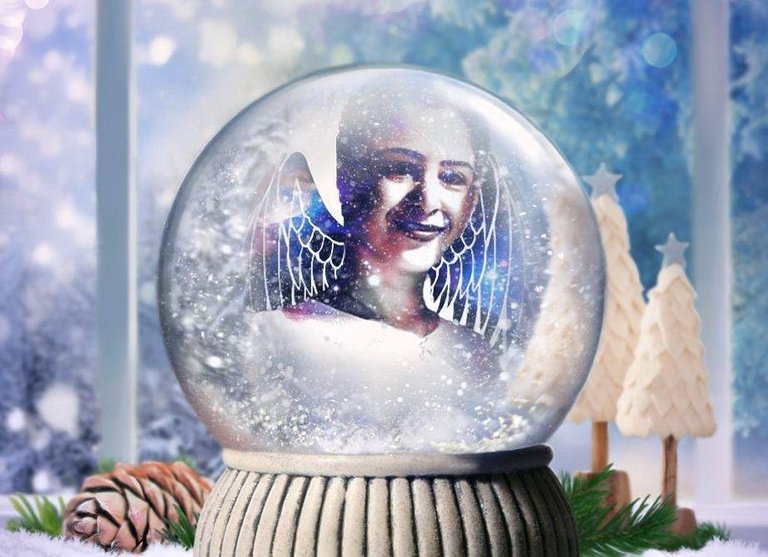
Hello everyone, friends. 🦋🤗
I have told you before that I visited the Hagia Sophia Museum in Trabzon on my trip to Rize in the past months. In fact, I tried to explain the garden of the Hagia Sophia Museum in detail in This post. Now, let's visit the interior of the Hagia Sophia Museum section by section.
Herkese merhaba arkadaşlar. 🦋🤗
Geçtiğimiz aylarda gitmiş olduğum Rize gezimde Trabzon'da bulunan Ayasofya Müzesi'ni gezdiğimden daha önce size bahsetmiştim. Hatta Ayasofya Müzesi'nin bahçesini ayrıntılı olarak bu paylaşımımda sizlere anlatmaya çalışmıştım. Şimdi gelin hep birlikte Ayasofya Müzesi'nin iç kısmını bölüm bölüm gezelim.
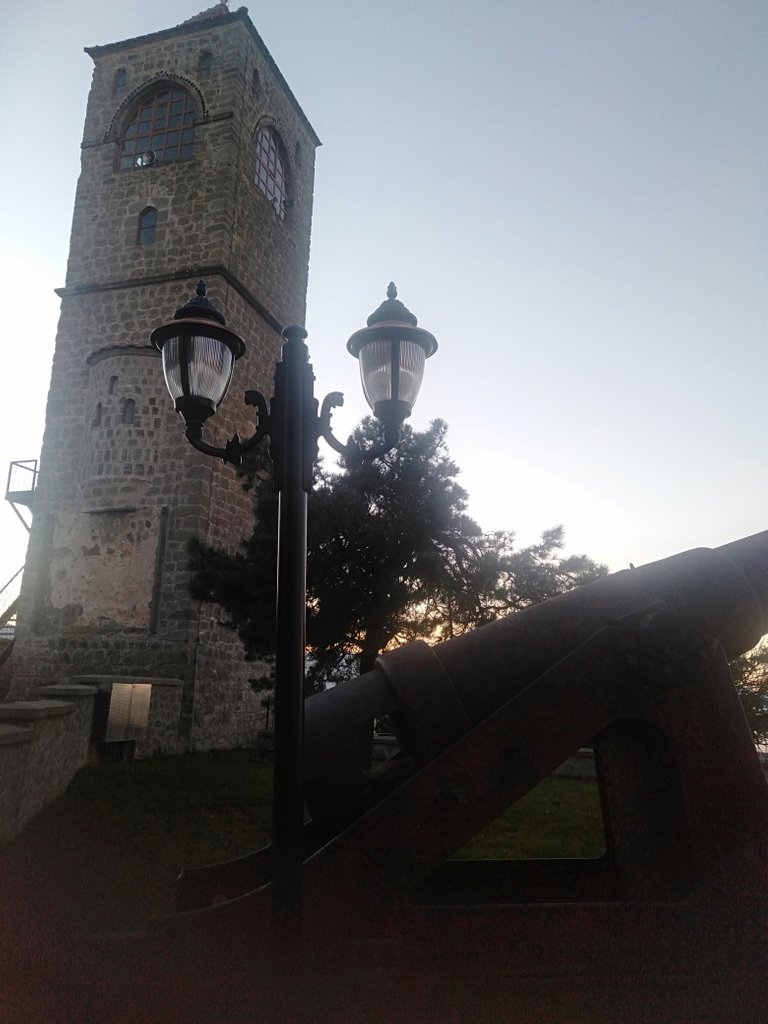
I say let's visit section by section because I took so many pictures that it is not possible for me to fit all the pictures in one post. We visited this unique historical beauty together with our tour guide. Our tour guide told us that there are 3 Hagia Sophia in Turkey. He stated that the oldest Hagia Sophia is in Istanbul, the second one is in Iznik and the third one is Trabzon Hagia Sophia Museum. Until this time, I only knew that there was Hagia Sophia Museum in Istanbul. During this trip, I learned that the Hagia Sophia Museum is in both Iznik and Trabzon
Bölüm bölüm gezelim diyorum çünkü o kadar çok resim çektim ki tek bir posta bütün resimleri sığdırmam mümkün değil.😊 Bu bölümde Ayasofya Müzesi'nin frekslerinin bulunduğu kısımla ilgili resimler ve hikayelerini paylaşacağım.
Bu eşsiz tarihi güzelliği biz tur rehberimizde birlikte gezdik. Tur rehberimiz bize Türkiye de 3 tane Ayasofya olduğundan bahsetti. En eski Ayasofya İstanbul'da, ikincisinin İznik'te ve üçüncüsünün de Trabzon Ayasofya Müzesi olduğunu belirtti. Bu zamana kadar ben sadece İstanbul'da Ayasofya Müzesi olduğunu biliyordum. Bu gezimde Ayasofya Müzesi'nin hem İznik hem de Trabzon'da olduğunu da öğrenmiş oldum.
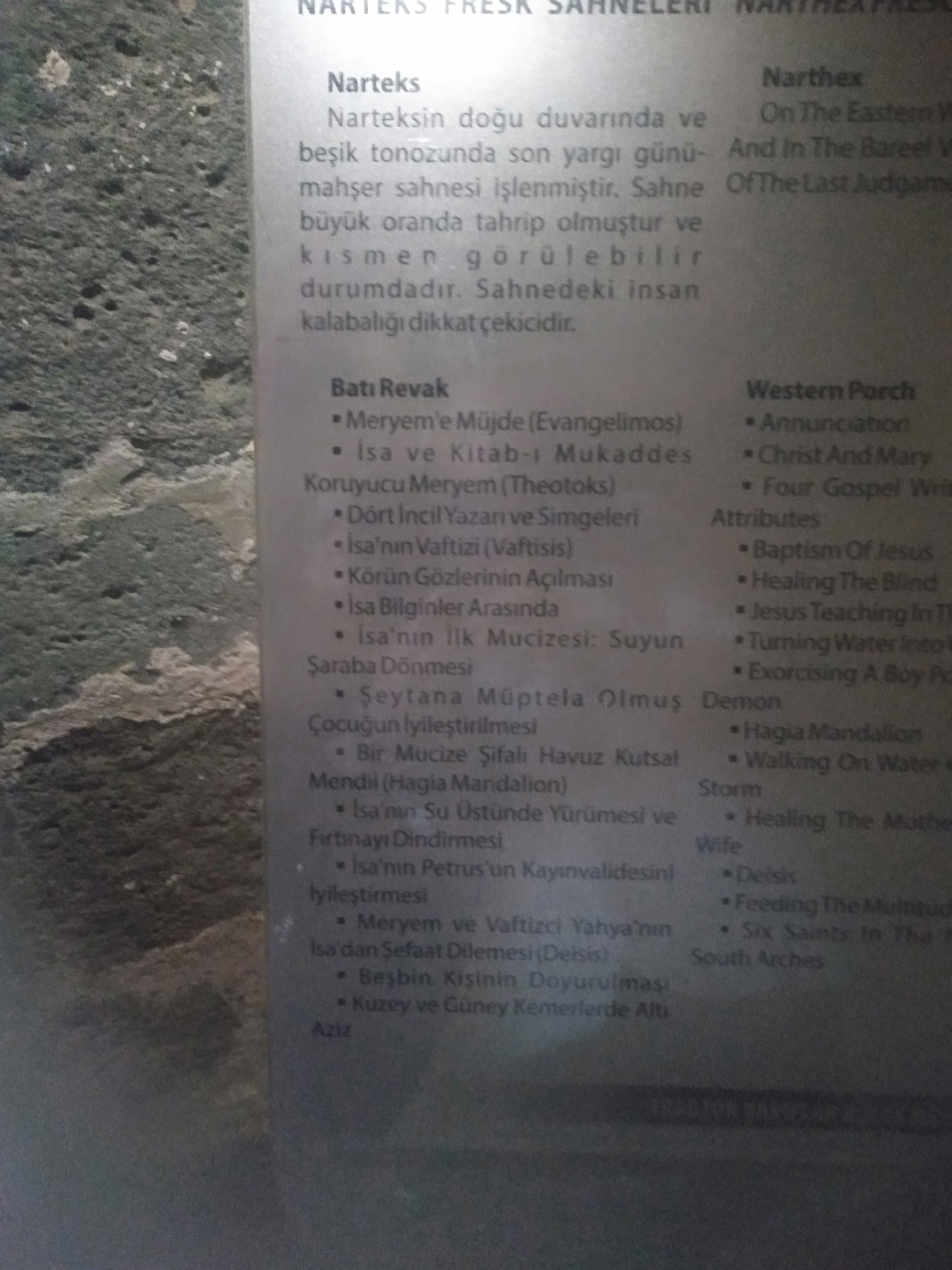 .
.
Again, our tour guide told some stories about the frescoes while visiting this section in the Hagia Sophia museum. When I asked our tour guide what the fresco was, he said that the way the paintings engraved on the walls in this museum are made is fresco. At that time, wet lime and plaster were crushed together, then colored and painted on the walls in this way.
Yine tur rehberimiz Ayasofya müzesinde Bu bölümü gezerken frekslerle ilgili bazı hikayeler anlattı. Tur rehberimize freksin ne olduğunu sorduğumda bu müzede duvarlarda işli olan resimlerin yapılış şeklinin freks olduğunu belirtti. O dönemde ıslak kireç ve sıva birlikte ezildikten sonra renklendirip bu şekilde duvarlara resim olarak işleniyormuş.
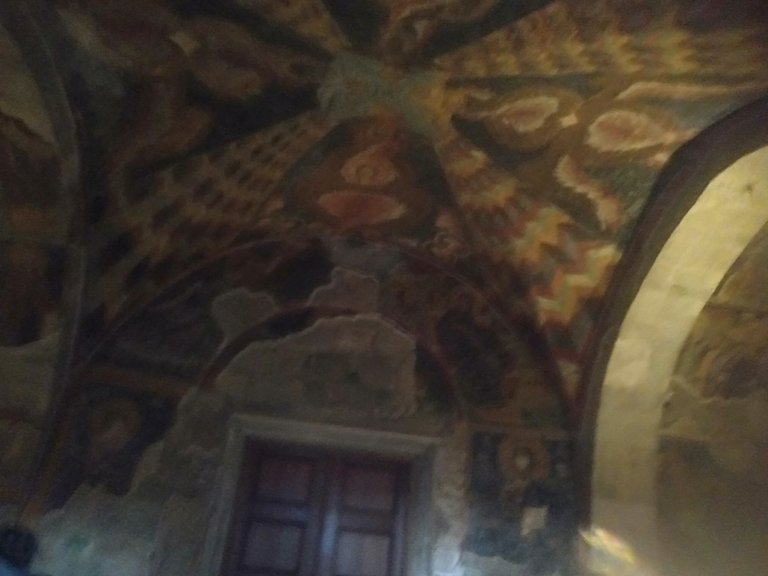
These frescoes, which are about the story of Christianity and depicting all the events from the birth of Jesus to his calling, have been eroded over time and the pictures can be seen indistinctly.
Hıristiyanlığın hikayesini konu alan ve Hazreti İsa'nın doğumundan çarmığa gerilişine kadar bütün olayların resmedildiği bu freksler zamanla aşınmış ve resimler belli belirsiz görülmektedir.

In the apses of the churches, the fresco of Mary sitting on the throne and Jesus, who is still in childhood, are carved. If in the fresco Mary is leaning the child Jesus on her left shoulder, these frescoes/icons; It is called Hodigitria Meryem, which means guide, guide. If the Child Jesus is at the level of Mary's belly, these frescoes/icons; It is called Hora tu Ahurito or Karye Meryem, meaning the one who fits the god who does not fit anywhere in his stomach. In the fresco on the apse of Hagia Sophia, Mary is sitting on the throne and the child Jesus is in her arms.
Kiliselerin apsislerinde genellikle tahtta oturan Meryem ve kucağında henüz çocukluk çağında olan İsa freski işlenir. Şayet fresk'te Meryem çocuk İsa'yı sol omzunda kendine yaslamış bir durumda ise bu fresklere/ikonlara; rehber, yol gösteren anlamına gelen Hodigitria Meryem adı verilir. Çocuk İsa Meryem'in karnı hizasında ise bu fresklere/ikonlara; hiçbir yere sığmayan tanrıyı karnına sığdıran anlamında Hora tu Ahurito yada Karye Meryemi adı verilir. Ayasofya'nın apsisindeki freskte Meryem tahtta oturmaktadır ve çocuk İsa kucağındadır.
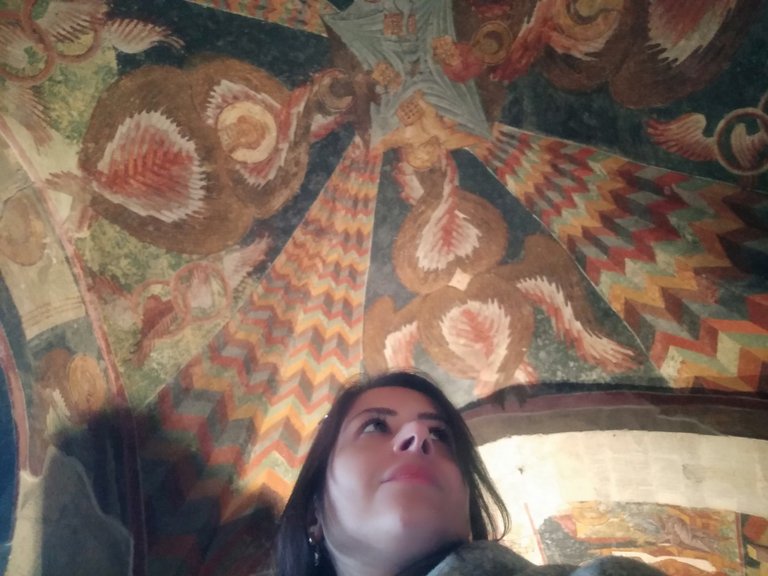
Again with these frescoes, the story of Adam and Eve's forbidden apple is depicted. You can read this story, which is the subject of our existence story, in more detail from the source I found below.
Yine bu frekslerle Adem ile Havva'nın yasak elma hikayesi de resmedilmiştir. Varoluş hikayemizi konu olan bu hikayeyi daha ayrıntılı bir şekilde aşağıda bulduğum kaynaktan okuyabilirsiniz.
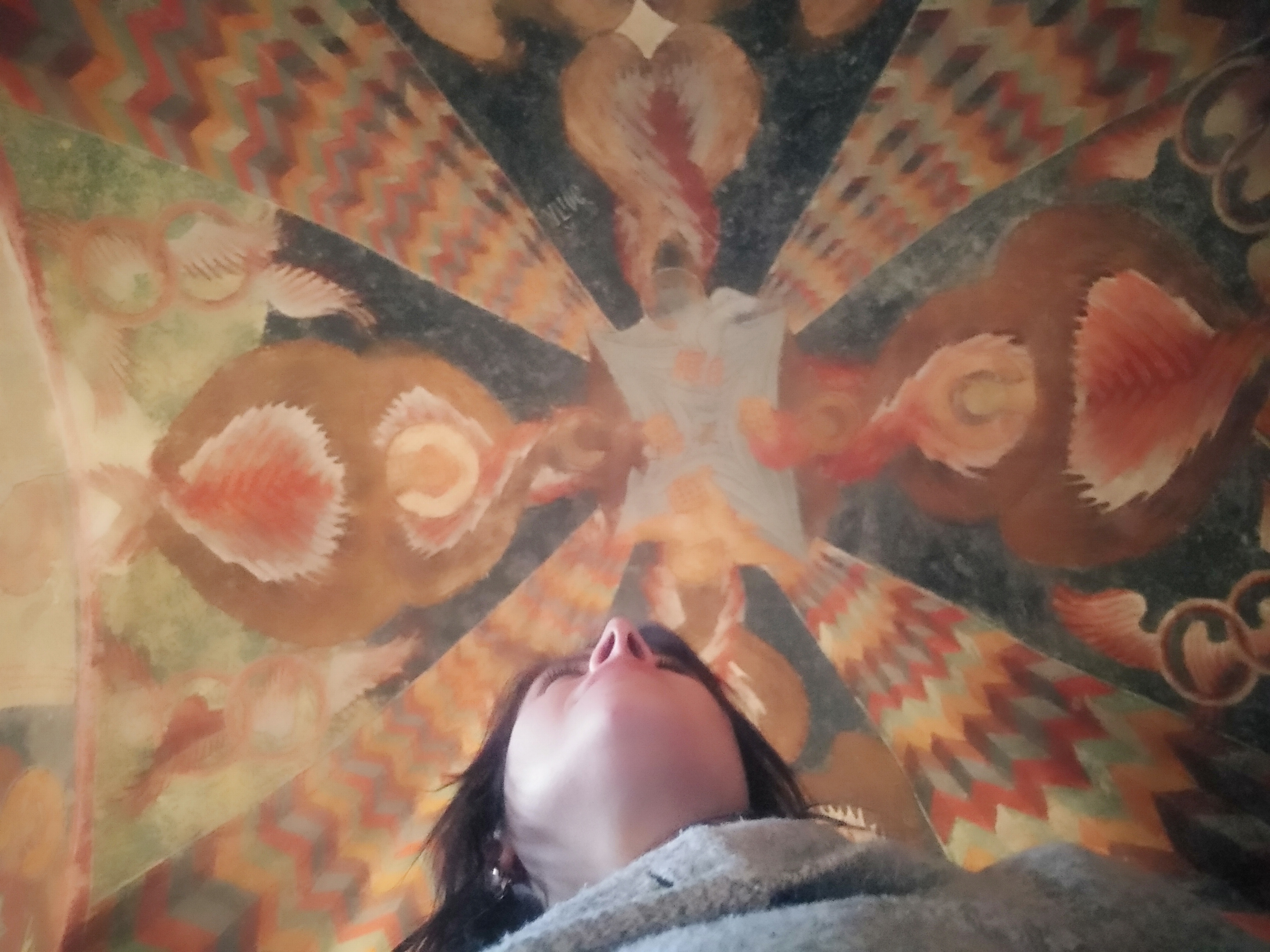
According to the Genesis Chapter of the Old Testament; The Lord God first created man (Adam) from dust and breathed the breath of life into his nostrils. He then plants a garden in Eden and places it there. In the first scene, the creation of man (Adam) and the plants in the garden where he was placed are portrayed in the friezes. A river flowed in the middle of the garden and was divided into four branches named Pişon, Gihon, Tigris and Euphrates. Man was allowed to eat all fruits except the tree of good and evil, and he was told that he would die the day he ate from the forbidden tree. One day, God gave man sleep and created woman (Eve) from his rib. One day, the most cunning snake of the created animals came to the woman and tricked her and made her eat the forbidden fruit by saying that they would become immortal if they ate the forbidden fruit, and the woman gave the fruit to her husband. In the third scene of the frieze, the snake is seen deceiving Eve. After eating the fruit, Adam and Eve, who were naked in Paradise until this time and had no sense of shame, opened their eyes and when they saw that they were naked, they sewed clothes from fig leaves and made aprons for themselves. Fig leaves appearing in the last scene of the first part of the frieze show Adam and Eve's embarrassment and their efforts to cover. Adam calls his wife Eve because she is the mother of all humanity. As punishment for their actions, they are expelled from the garden of Eden (heaven) by God. They start cultivating the land at the command of God, first they have a son named Cain and then Abel. Cain is a farmer and Abel is a shepherd. When Cain is stingy with his offerings to God, his offerings are rejected, while those of Abel, who is generous, are accepted. Enraged by this situation and jealous of his brother, Kayin kills Abel in the field one day. In the last scene on the frieze, the standing figure is Cain, and lying on the ground is the murdered Abel. The pre-Easter Sunday Hymn to the left of the inscription band on the Creation friezes. The one on the right is the part of the Torah describing the creation of Adam, taken from the Genesis Chapter.
Source
Eski Ahit'in Tekvin Babı'na göre; Rab Tanrı önce insanı (Adem) topraktan yaratmış ve burnuna yaşam soluğunu üflemişti. Daha sonra Aden'de bir bahçe dikerek onu oraya yerleştirir. Frizlerde ilk sahnede insanın (Adem) yaratılışı ve yerleştirildiği bahçedeki bitkiler canlandırılmıştır. Bahçenin ortasından bir ırmak akmakta ve Pişon, Gihon, Dicle ve Fırat adlarında dört kola ayrılmakta idi. İnsana, iyilik ve kötülük ağacı hariç tüm meyvelerden yemesi için müsaade edilmiş, yasak ağaçtan yediği gün öleceği söylenmişti. Tanrı bir gün insana uyku vererek onun kaburga kemiğinden kadını (Havva) yarattı. Yaratılan hayvanların en kurnazı yılan bir gün kadına gelerek onu kandırdı ve yasak meyveden yerlerse ölümsüz olacaklarını söyleyerek yasak meyveden yemesini sağladı, kadın meyveden kocasına da yedirir. Frizde üçüncü sahnede yılan Havva'yı kandırırken görülmektedir. Bu zamana kadar cennette çıplak olan ve utanma duygusu olmayan Adem ve Havva'nın meyveden yedikten sonra gözleri açılır ve çıplak olduklarını görünce incir yapraklarından elbise dikerek kendilerine önlük yaparlar. Frizde birinci kısımdaki son sahnede görünen incir yaprakları Adem ve Havva'nın utançlarını ve örtünme çabalarını göstermektedir. Adem karısına tüm insanlığın annesi olduğu için Havva adını verir. Yaptıklarına ceza olarak Tanrı tarafından Aden bahçesinden (cennetten) kovulurlar. Tanrı'nın emri ile toprağı işlemeye başlarlar, önce Kayin daha sonra'da Habil isminde oğulları olur. Kayin çiftçi, Habil is çobandır. Kayin Tanrı'ya sunacağı sunularda cimri davranınca sunuları reddedilirken, cömert davranan Habilin sunuları kabul edilir. Bu duruma çok sinirlenen ve kardeşini kıskanan Kayin birgün tarlada Habil'i öldürür. Frizde en sonda canlandırılan sahnede ayakta durmakta olan figür Kayin, yerde yatmakta olan da öldürülmüş olan Habil'dir. Yaratılış frizlerinin üzerindeki yazı kuşağının sol taraftaki Paskalya öncesi okunan Pazar İlahisi'dir. Sağ taraftaki ise Tevrat'ın Tekvin Babı'ndan alınmış olan Adem'in yaratılışını anlatan kısımdır.
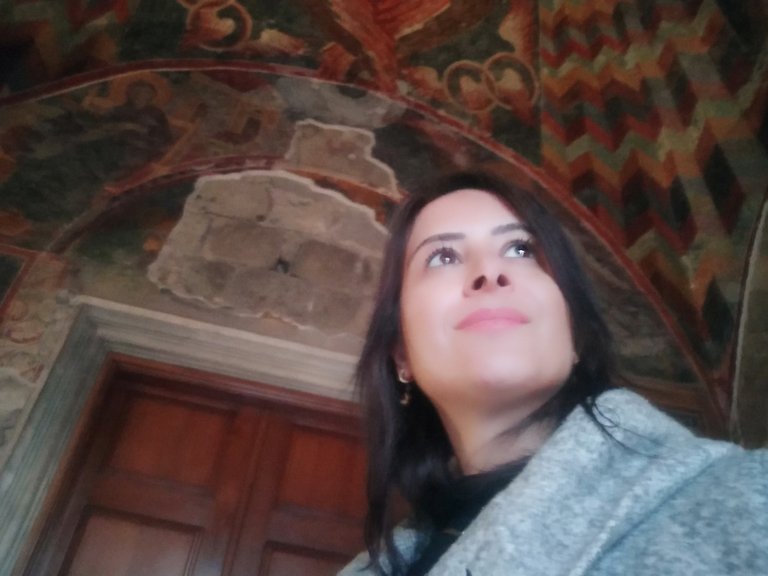
All historical beauties reflect our real life story. Just as our creation story is reflected in these frescoes.
Bütün tarihi güzellikler bizim asıl hayat hikayemizi yansıtmaktadır. Tıpkı bu frekslerde yaratılış öykümüzün yansıtıldığı gibi.
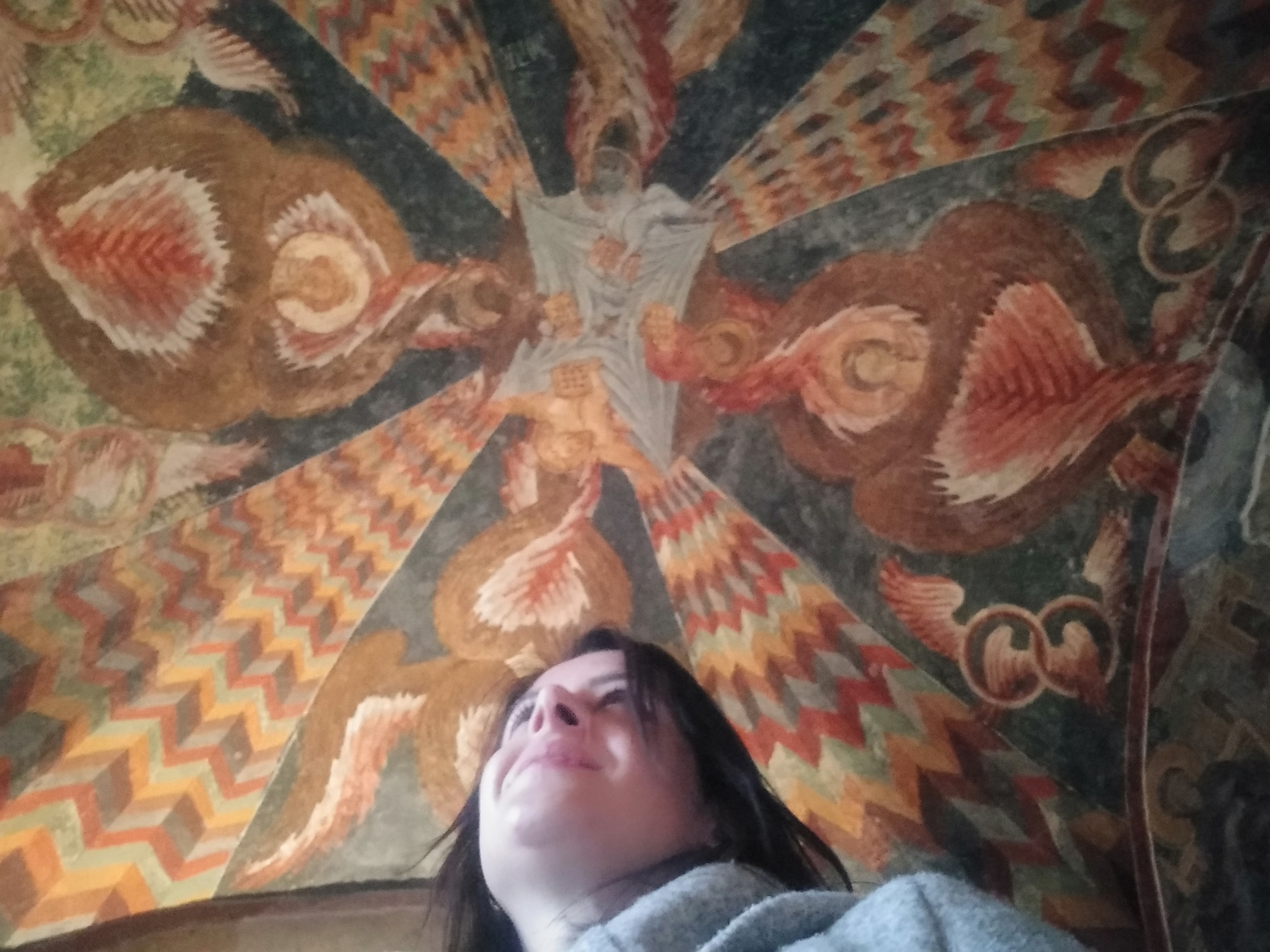
Our tour guide explained every detail here very well, but it is very difficult to keep all of them in mind. That's why I tried to research the sources and share the pictures I took for you and try to reflect the story of these pictures to you correctly.
Buradaki her bir ayrıntıyı tur rehberimiz bize çok güzel bir şekilde açıkladı ancak bunların hepsini akılda tutup anlatabilmek çok zor. Bu yüzden kaynaklardan araştırma yapıp sizler için hem kendi çektiğim resimleri paylaşıp hem de bu resimlerin hikayesini doğru bir şekilde size yansıtmaya çalıştım.
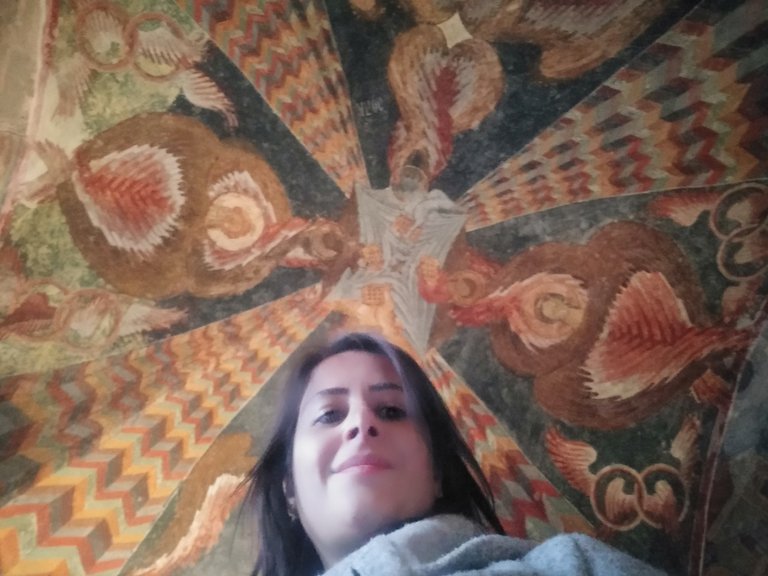
Traveling around and breathing this historical air, trying to understand how people used to live, going to the past and breathing this mystical air, discovering the mysterious sides of history made me feel like an explorer. As Evliya Çelebi wrote in his travel book, I continue to share my travel memories with you here.
Buraları gezip bu tarihi havayı solumak, eskiden insanların nasıl yaşadığını anlamaya çalışmak, geçmişe gitmek ve bu mistik havayı solumak tarihin gizemli taraflarını keşfetmek, bana kendimi kaşif gibi hissettirdi. Evliya Çelebi'nin seyahatnamesini yazdığı gibi ben de burada sizlerle seyahat anılarımı paylaşmaya devam ediyorum.🤗🦋

Yes, as you can see in the picture, we have opened the dusty doors of history with you, albeit a little.
Evet resimde gördüğünüz gibi sizlerle birlikte tarihin tozlu kapılarını biraz da olsa aralamış olduk.
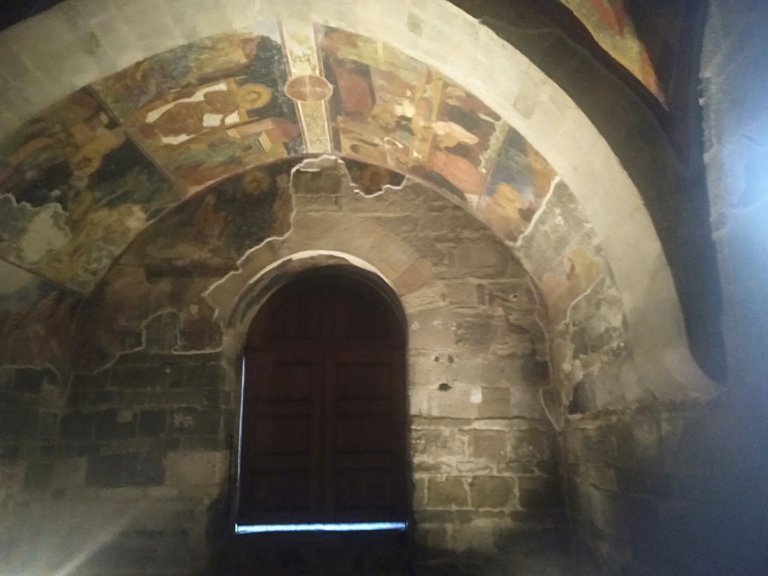
Goodbye dear friends, see you in my next post.🤗
Bir dahaki yazımda görüşmek üzere hoşçakalın sevgili dostlar.🤗
